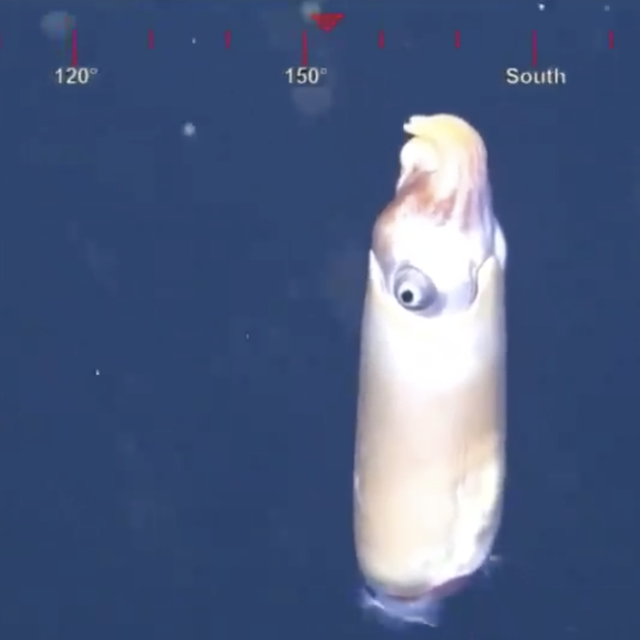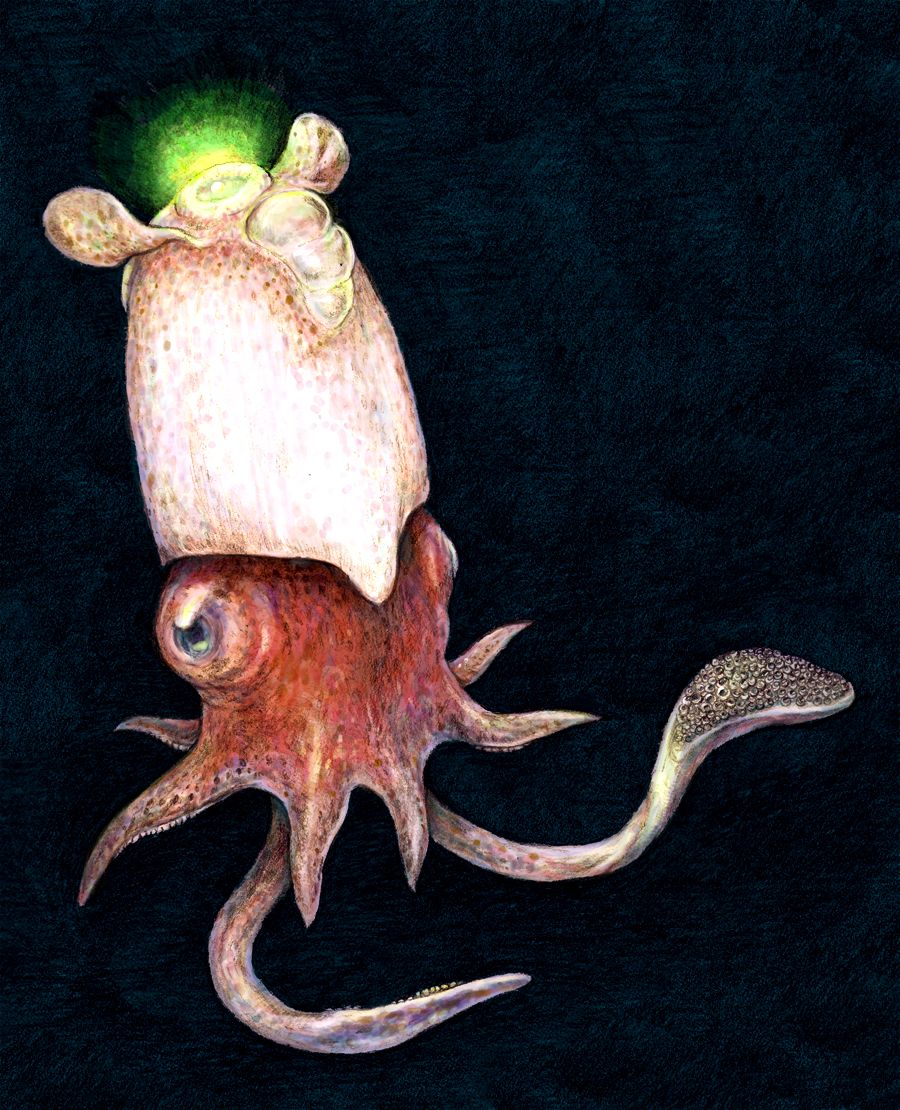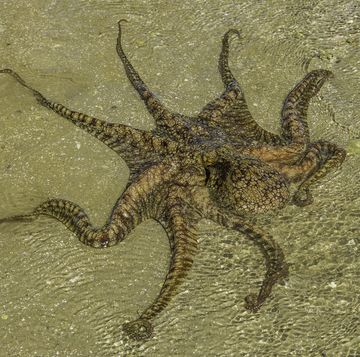- Scientists are seeing the secretive ram's horn squid in video footage for the very first time.
- The animal isn't endangered—it just lives in the deep ocean, which we know very little about.
- In the video, the squid is literally upside down from how scientists believed it would act.
For the first time ever, scientists have recorded footage of the ram’s horn squid, an enigma whose common shells—really their skeletons!—have belied their vanishing secrecy.
🦑 You love badass beasts. So do we. Let's nerd out over them together.
In the enchanting video below, even the scientists are shocked.
Scientists have long known about the ram’s horn squid, Spirula spirula, which is the only surviving member of its family today. The creature isn't endangered, or even especially vulnerable—it’s just very hard to find in nature. And the sighting itself brought real observational surprises, too.
The squid in the video, captured by scientists at the Schmidt Ocean Institute, is holding itself in a totally different orientation than the Spirula spirula specimens kept in captivity. Its buoyant organ is facing downward, and its light-up organ, typically used to blind prey animals below predators, is pointed upward. So you could say the real squid in the wild has turned our understanding upside down.
The ram’s horn squid does have 10 tentacles total, like other squids, but it’s not technically a true squid. It’s a very squid-like cephalopod that has other qualities in common with fellow cephalopods like nautiluses. The shells people find are from an unusual “internal shell” like a skeleton that forms part of the squid’s anatomy.
The deep sea is extremely poorly understood, so much so that the sea floor is often called the second “final frontier” along with space. Dragging instruments down to the right depth to observe deep sea creatures requires tons of specialized engineering because of the gigantic pressure. This tiny squid is still at least 300 feet deep at its shallowest preferred depth, and it lives off the edge of the continental shelf very deep down.
The scientists took the video using a remotely operated vehicle nearly 3,000 feet deep in the Great Barrier Reef off the eastern coast of Australia. The same factors that make the deep sea inhospitable to normal research styles have turned the creatures who live there into world-class adaptation dynamos. The ram’s horn squid’s spiraling shell-skeleton is a buoyancy organ that helps it adjust its depth by amounts of thousands of feet per day.
Humans who SCUBA dive use a combination of weight belts and inflatable items to sink well and then buoy again if needed, but our anatomy could simply not make a journey that far during the course of one day. The resulting shell is also featherlight compared to the heavier, calcified shells we associate with shellfish like oysters, but even other spiraling shells found on beaches.
What will scientists do now that they’ve not just seen the squid in the wild—but basically caught it swimming upside down?
With a very small sample size of wild squid observations, they don’t have enough data to conclude that the squids face one way or the other as a matter of course. But now they have a sample to study to see how the squid makes locomotion with its fins and even a hint of how it uses ink like other squids. There’s a lot to consider in the world of the ram’s head squid.

Caroline Delbert is a writer, avid reader, and contributing editor at Pop Mech. She's also an enthusiast of just about everything. Her favorite topics include nuclear energy, cosmology, math of everyday things, and the philosophy of it all.














